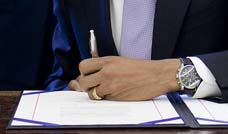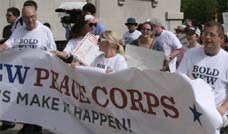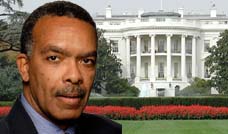
Larry Hibbard's ongoing project for the Sakya Buddhist order, one of four main branches of Buddhism, will provide a seat for the international group's leader in the Western Hemisphere. Now under construction on a tract of farmland in Walden, N.Y., the $2.8 million temple had its groundbreaking in 2007 and is expected to be completed by 2011, the year His Holiness Sakya Trizin, an equal of the Dalai Lama, is scheduled to visit the temple grounds. None of this planning, studying, learning, designing or building would have ever taken place, however, without Hibbard's wife of 12 years, Mary Murphy, a 61-year-old health care consultant, grant writer and registered nurse who's fluent in Nepali, the language of Nepal. That's right, she speaks Nepalese. On her way to a 1973 Peace Corps assignment, she struck up a conversation with a monk named Kalsang Gyaltsen, and he asked her to deliver a letter to his brother in Nepal. That simple task introduced her to a Tibetan family that she's kept in touch with for almost 40 years. Since then, the monk has risen through Buddhist ranks to become Venerable Lama Kalsang Gyaltsen, spiritual director of Sakya centers in the Western Hemisphere, including the new New York monastery and temple. Murphy returns to the temple two or three times a year to visit with friends and practice her Nepali. She and Hibbard will travel to Nepal in November for the 50th anniversary of the recognition of Sakya Trizin as the order's spiritual leader. "This project," she says, "has allowed me to see how a group of people with wisdom and patience can create great things that will last through history," she says. "This project makes it clear, very clear, that it's more important to do it right than to do it quickly. It isn't about the accomplishments of one person, but about the energy of a group and community." She smiles. "Larry and I have been invited into the process," she says. "I have a real sense of wonder about that."
Nepal RPCV Mary Murphy helped her husband win commission to became the chief architect of Tsechen Kunchab Ling
Manson architect designs Buddhist temple
Manson architect designs Buddhist temple
By Mike Irwin
World staff writer
Posted August 14, 2009
MANSON - On the north shore of Lake Chelan, upstairs above a consignment shop, a small-town orchardist-turned-architect helps red-robed monks continue a thousand-year-old Buddhist tradition of building sacred temples.
Call it dharma or karma or just plain fate, but Larry Hibbard has jumped aboard the greater Wheel of Life to spin with the likes of Kublai Khan, as well as the Dalai Lama and a host of other high-level holy men toward shaping a beautiful yet practical place of contemplation that could last for centuries.
"All I'm doing is riding on the coattails of rich, cultural traditions," says the modest Manson architect. "And making sure it all fits with modern building codes."
Hibbard's ongoing project for the Sakya Buddhist order, one of four main branches of Buddhism, will provide a seat for the international group's leader in the Western Hemisphere. Now under construction on a tract of farmland in Walden, N.Y., the $2.8 million temple had its groundbreaking in 2007 and is expected to be completed by 2011, the year His Holiness Sakya Trizin, an equal of the Dalai Lama, is scheduled to visit the temple grounds.
Hibbard, 61, became chief architect of Tsechen Kunchab Ling, which means Temple of All-Encompassing Great Compassion, in 2005 after studying Buddhist traditions and Tibetan culture for the project's initial proposal. His wife, Mary Murphy, has longtime connections with the order's leader in the Americas, a monk she met during a Peace Corps assignment in the 1970s. On a longshot, Hibbard submitted his plans for consideration - along with other architects from around the globe - to the sect's leaders. Six months later, he got a letter saying he'd snagged the job.
The new building is only the sect's fourth full-fledged temple since the original was erected in Tibet in the year 1073. About a century later, that building was expanded to include a new library funded by Kublai Khan, the Mongol emperor. Other present-day temple sites include Singapore and Raipur, India.
"No question, this project has put me to the test of being an architect," says Hibbard, who almost 30 years ago swapped apples for architecture when he left the Manson orchard he'd owned and worked since high school. Since then, Hibbard has been one of North Central Washington's key designers of green and energy-efficient homes, public buildings, parks and marinas.
His projects include remodeling, improvements and new construction at the local hospital, schools and gyms, churches, hotels, museums and theaters. New construction jobs have also included dozens of homes in the Lake Chelan area, among them some isolated, off-the-grid, alternative-energy projects.
"True, for an architectural firm like ours, some might consider this an odd place - small town, end of the road," Hibbard says. "But it works." And business is brisk enough for his two-man operation, he adds, that he's hesitated for years to establish an Internet presence. He still doesn't have a Web site.
"When Web design firms call up," he says, "I ask them if having a Web site will increase my business. ‘Most definitely,' they say. So I tell them to forget it. I already have just the right amount of work."
In New York, the Sakyas specified only three requirements for their new temple - simple, solid and spacious - but it was clear from the beginning that the followers' expectations included historically accurate design, proportions and embellishments that would last far into the future, maybe even centuries. And it all had to mesh with New York state's building and safety codes, plus fit snugly into a picturesque village in upstate New York with its own strong sense of place and history.
Hibbard jokes that the steel-girder core of the square building "looks a little bit like your basic Costco store," and compares the entire structure to something like a wedding cake: no-frill layers underneath, fancy decorations on the surface. Those decorations are likely to include three hammered copper spires for the building's cupola, corner pieces depicting fanciful alligators, 32 discs displaying Buddhist artistic and spiritual symbols and a six-foot-high statue of Buddha.
To suit American tastes and regulations, additions to the traditional floor plan include an up-to-code kitchen and tea room, a separate room of shoe racks (shoes come off when a person enters the temple), a ventilated and fireproofed butter-lamp (votive candle) room, a downstairs bookstore and gift shop and two rows of restroom stalls. The monks questioned the need for so much bathroom space, and they soon learned it was mandatory if thousands of followers were gathering on the grounds. America is different from India, Hibbard pointed out.
Walden, a city of around 6,000, has embraced the project, says Hibbard, and welcomed the Tibetans and their international Buddhist following. The planning and permit process has been hailed by city officials, says the architect, as one of the smoothest-running projects they've ever addressed.
"The monks are very clear on this subject," says Hibbard, "They insist that this project has gone so smoothly because of their prayers and direct, divine intervention."
In fact, Hibbard says, one monk observed that the process was going so smoothly that the only conclusion to be reached "was that we must have been building temples in previous lives. How else to explain it?"
None of this planning, studying, learning, designing or building would have ever taken place, however, without Hibbard's wife of 12 years, Mary Murphy, a 61-year-old health care consultant, grant writer and registered nurse who's fluent in Nepali, the language of Nepal. That's right, she speaks Nepalese.
On her way to a 1973 Peace Corps assignment, she struck up a conversation with a monk named Kalsang Gyaltsen, and he asked her to deliver a letter to his brother in Nepal. That simple task introduced her to a Tibetan family that she's kept in touch with for almost 40 years. Since then, the monk has risen through Buddhist ranks to become Venerable Lama Kalsang Gyaltsen, spiritual director of Sakya centers in the Western Hemisphere, including the new New York monastery and temple.
Murphy returns to the temple two or three times a year to visit with friends and practice her Nepali. She and Hibbard will travel to Nepal in November for the 50th anniversary of the recognition of Sakya Trizin as the order's spiritual leader.
"This project," she says, "has allowed me to see how a group of people with wisdom and patience can create great things that will last through history," she says. "This project makes it clear, very clear, that it's more important to do it right than to do it quickly. It isn't about the accomplishments of one person, but about the energy of a group and community."
She smiles. "Larry and I have been invited into the process," she says. "I have a real sense of wonder about that."
Mike Irwin: 665-1179
irwin@wenatcheeworld.com













